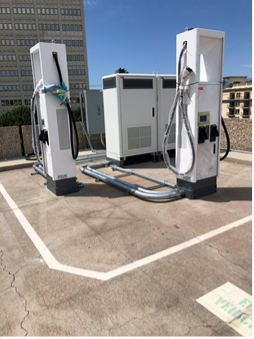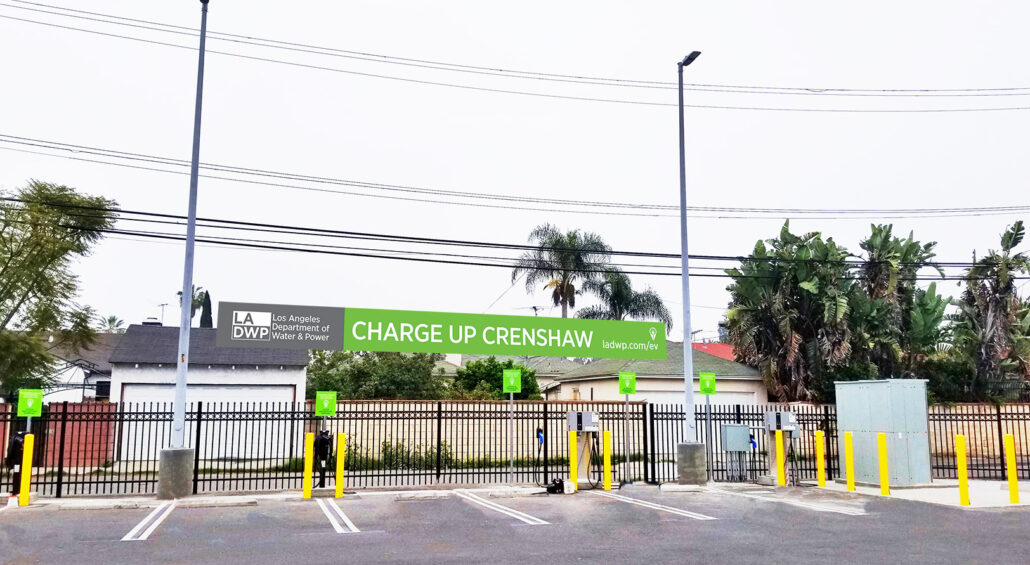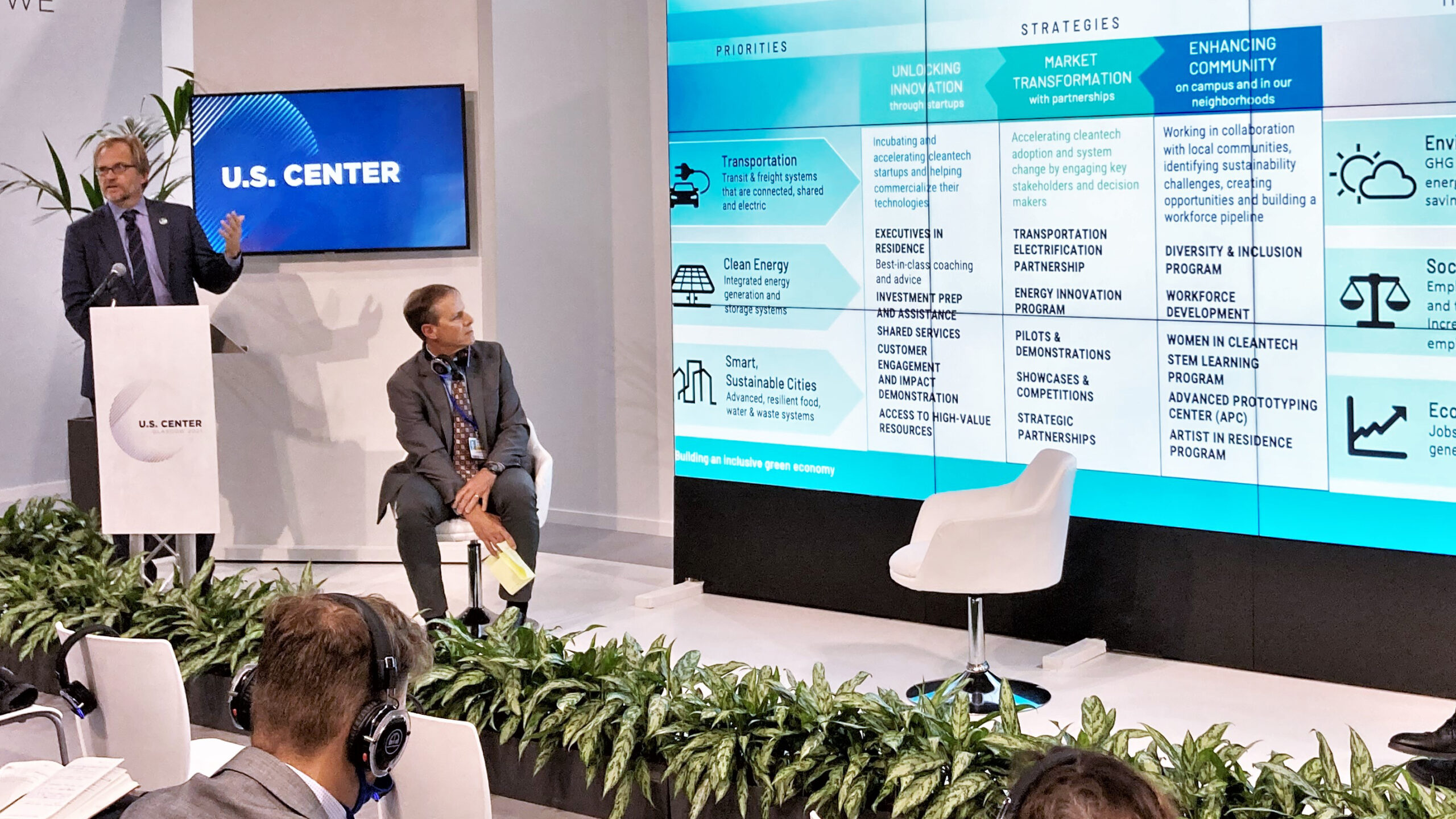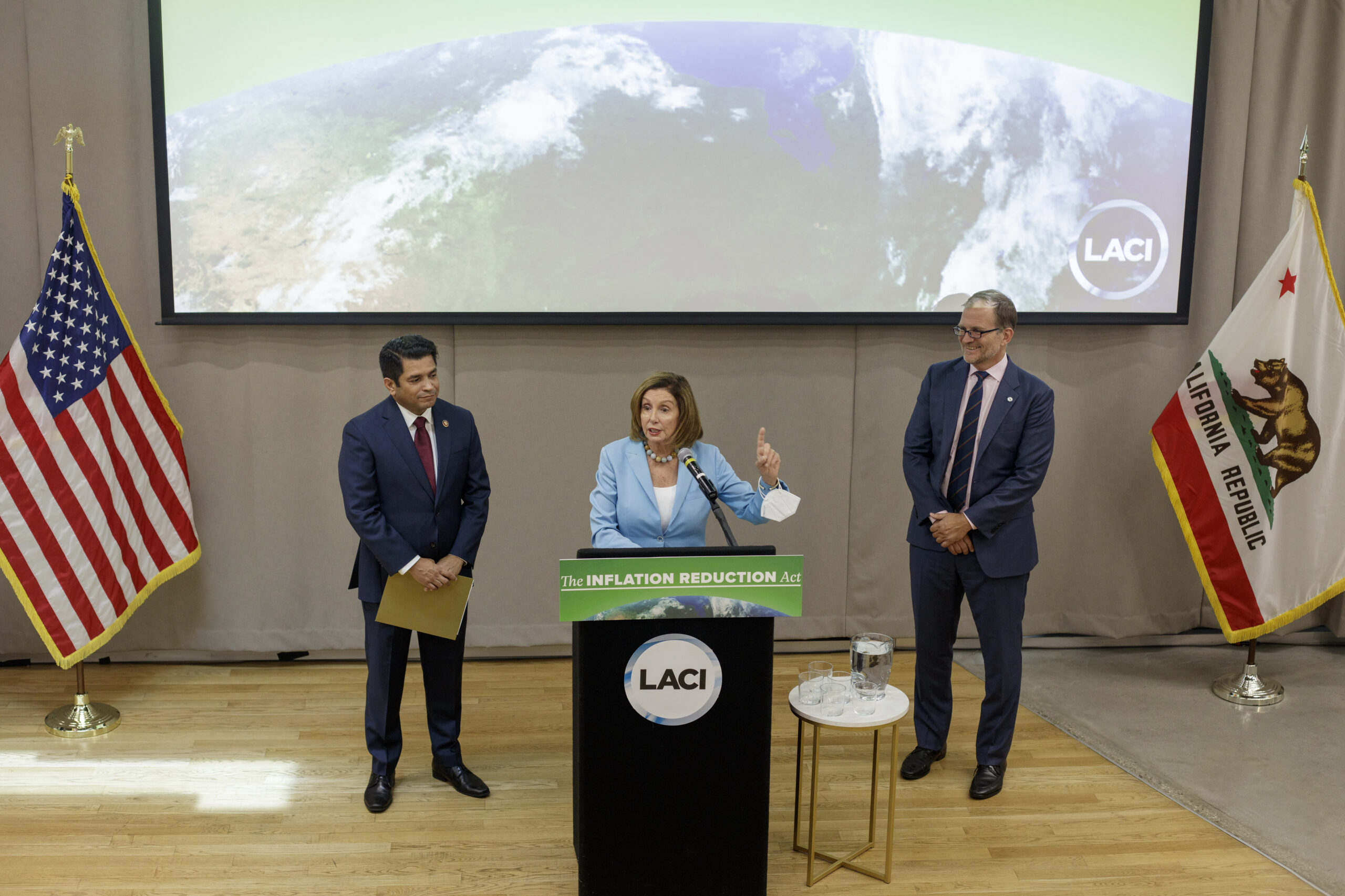
LOS ANGELES, CA – Congressman Jimmy Gomez (CA-34) and Speaker Nancy Pelosi visited the Los Angeles Cleantech Incubator (LACI) in the Arts District to highlight the Inflation Reduction Act’s impact on clean energy production and transportation electrification to fight the climate crisis.
The Inflation Reduction Act represents the single largest investment in climate action in American history. Analysis from organizations such as Energy Innovation and the Rhodium Group find that the climate provisions of the Inflation Reduction Act, including the used clean vehicle and home energy savings tax credits championed by Rep. Gomez, would put the United States on a path to meeting its climate commitments by decreasing greenhouse gas emissions by 40% by 2030.
“It’s impossible to overstate how transformative the Inflation Reduction Act is, particularly on climate action,” said Congressman Gomez (CA-34). “I am especially proud to see one of my bills that became law, the Affordable EVs for Working Families Act, encourage local organizations such as LACI to work with clean energy partners to bring our nation closer toward a greener and more prosperous future. This law would single-handedly create 9 million good-paying jobs over the next decade and put our country on track to meet our nation’s climate goals. I want to thank Speaker Pelosi for her leadership in getting this life-changing legislation across the finish line for America’s families and for the next generation.”
“It was a privilege to join Congressman Jimmy Gomez at the Los Angeles Cleantech Incubator, seeing firsthand how clean industries are powering prosperity in our communities,” Speaker Nancy Pelosi said. “Thanks to President Biden and Democrats in Congress, the Inflation Reduction Act is turbocharging clean energy innovation here in California and across the country – putting America on a path to saving the planet while creating millions of good-paying jobs. House Democrats are grateful for the persistent leadership of Congressman Gomez, who helped lead the charge to secure historic investments in energy efficient homes and vehicles. Working together, we will not relent until we achieve a safer, greener, healthier future for generations to come.”
“We are grateful to Speaker Pelosi and for Congressman Gomez’ leadership in ensuring the IRA not only is the largest climate bill in history, but is a targeted investment in ensuring every American can access clean energy, retrofit their homes, and drive an EV,” said Matt Petersen, CEO of LACI. “In April 2020, LACI’s Transportation Electrification Partnership proposed a federal $150 billion stimulus to boost electric vehicle manufacturing, expand zero emission infrastructure, provide low income families access to mobility, and promote EV-related workforce development. Thanks to the President, the Speaker and bills like Rep. Gomez’ Affordable EVs for Working Families Act, it is gratifying to see so many of the proposals become law including the used EV tax credit and investing in producing critical minerals from places like Lithium Valley.”

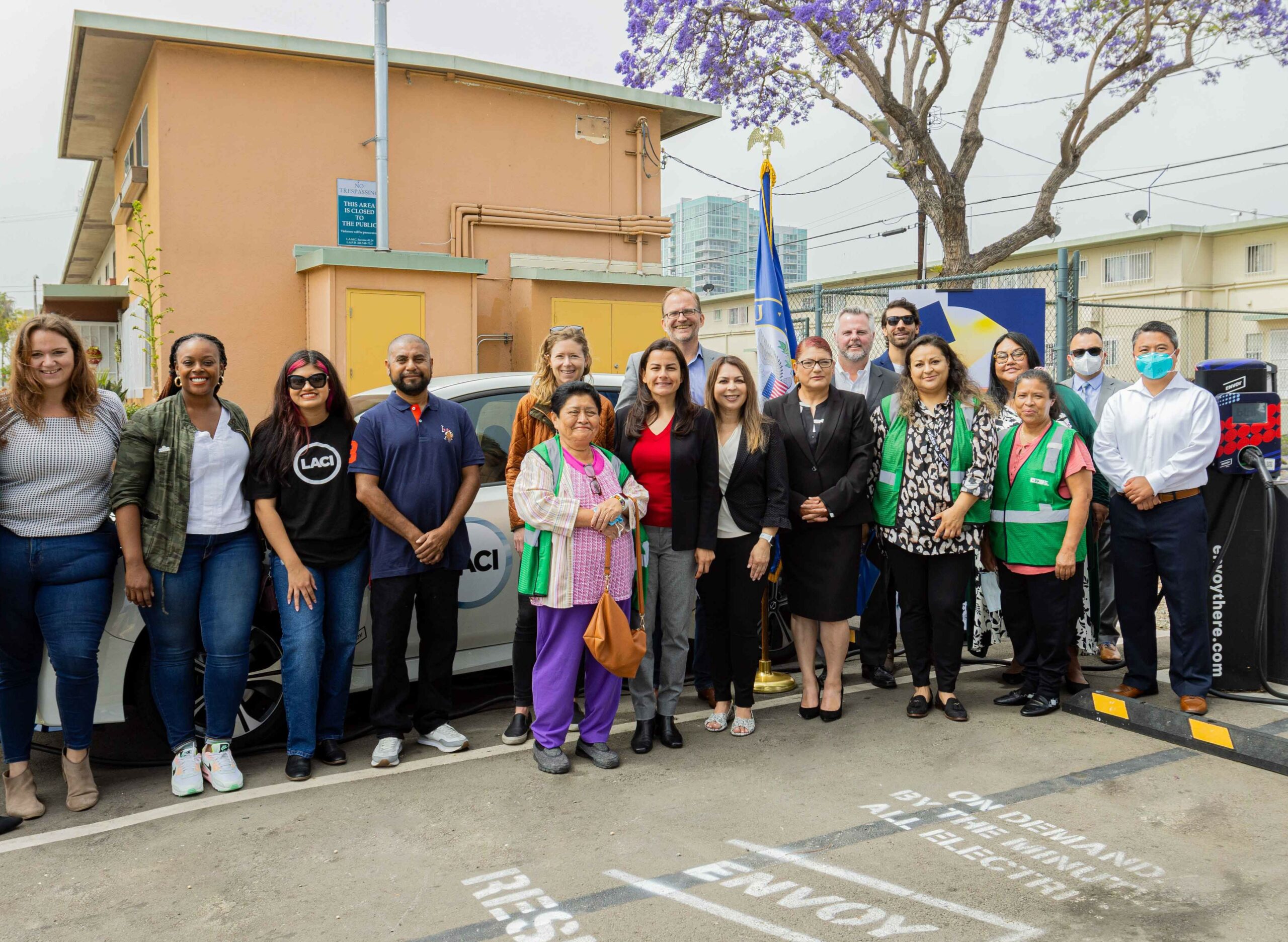
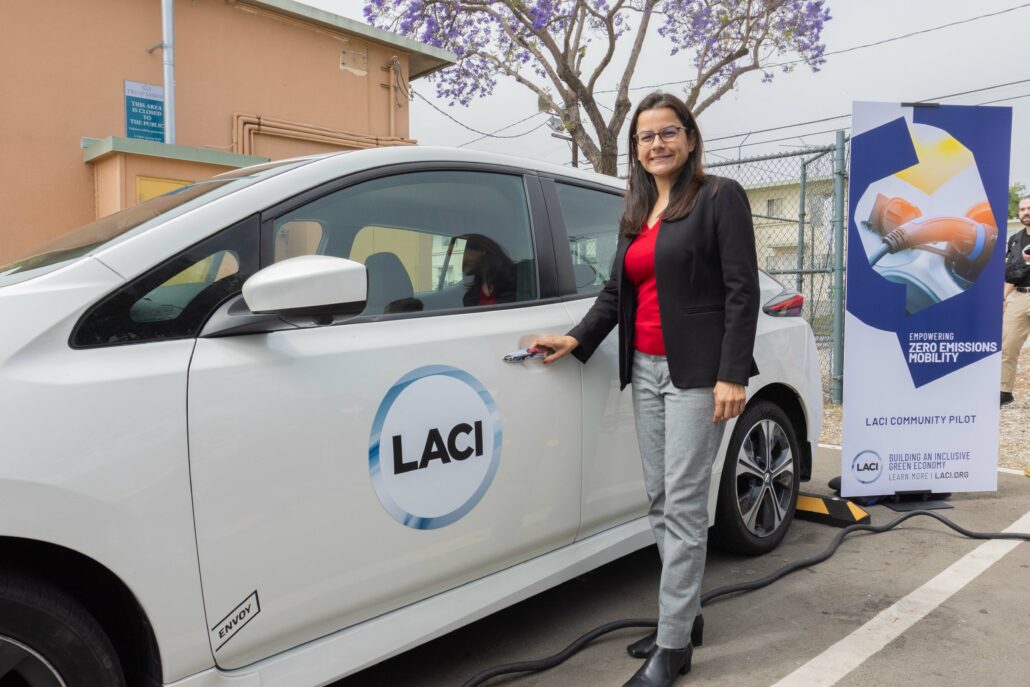
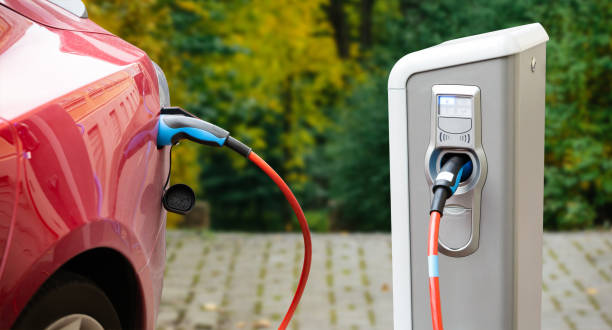
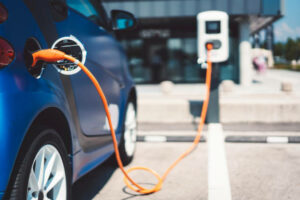 that could hinder widespread EV adoption. EBCE identified that in Alameda County alone 47% of the population are renters and 90% of all multifamily housing properties with 5+ units are 50 years old or older, which means that electrical capacity upgrades will be likely across this building portfolio. Those upgrades are the property owner’s responsibility and not the tenants (e.g., key barrier to deploying Level 1 and/or Level 2 charging to enable home charging). Because those upgrades cannot occur quickly at the scale needed to meet the state’s goals, EBCE is prioritizing deployment of reliable, convenient, and cost-effective public fast charging options near where renters live to ensure all residents in EBCE’s service area can join the transition to EVs.
that could hinder widespread EV adoption. EBCE identified that in Alameda County alone 47% of the population are renters and 90% of all multifamily housing properties with 5+ units are 50 years old or older, which means that electrical capacity upgrades will be likely across this building portfolio. Those upgrades are the property owner’s responsibility and not the tenants (e.g., key barrier to deploying Level 1 and/or Level 2 charging to enable home charging). Because those upgrades cannot occur quickly at the scale needed to meet the state’s goals, EBCE is prioritizing deployment of reliable, convenient, and cost-effective public fast charging options near where renters live to ensure all residents in EBCE’s service area can join the transition to EVs.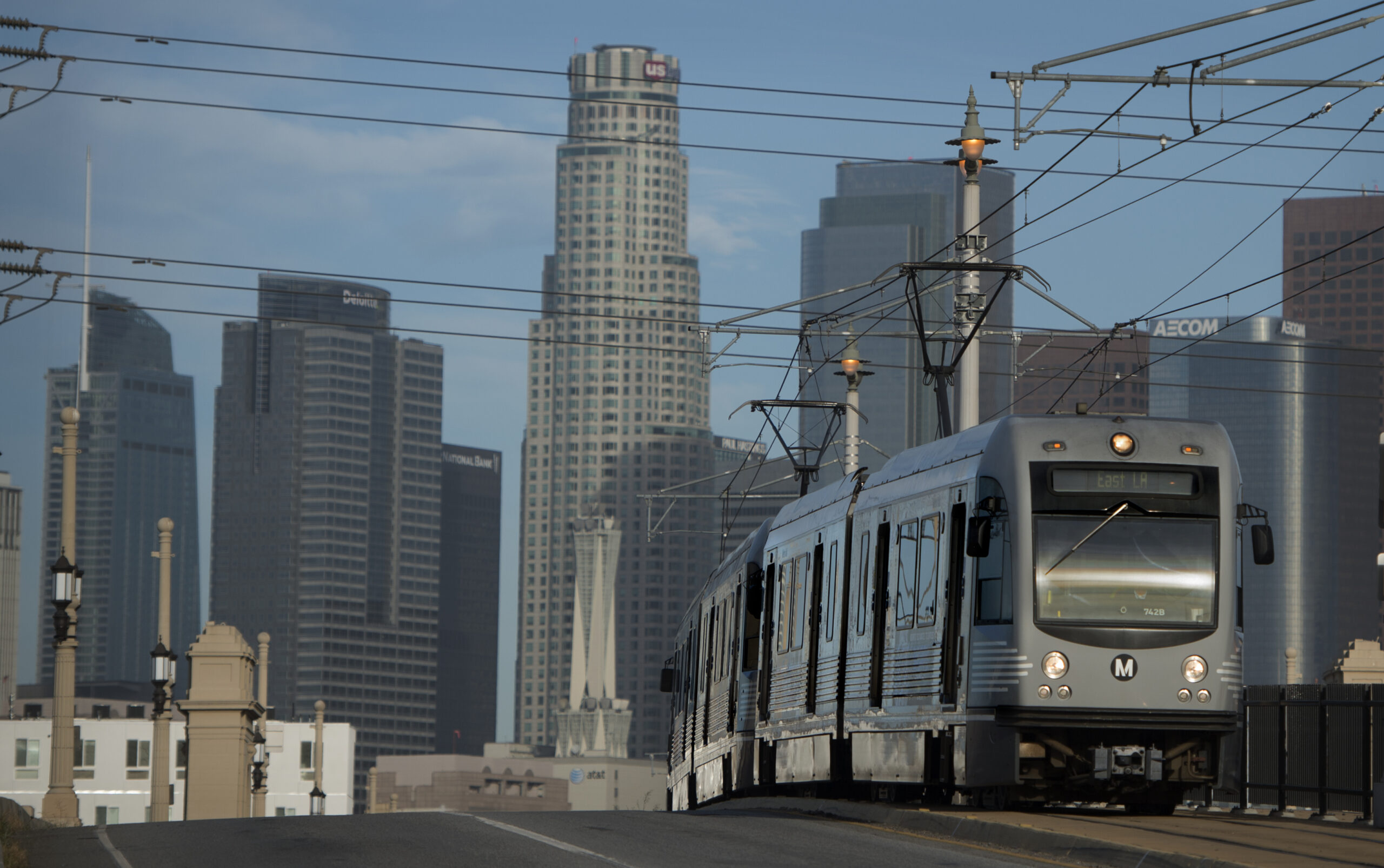


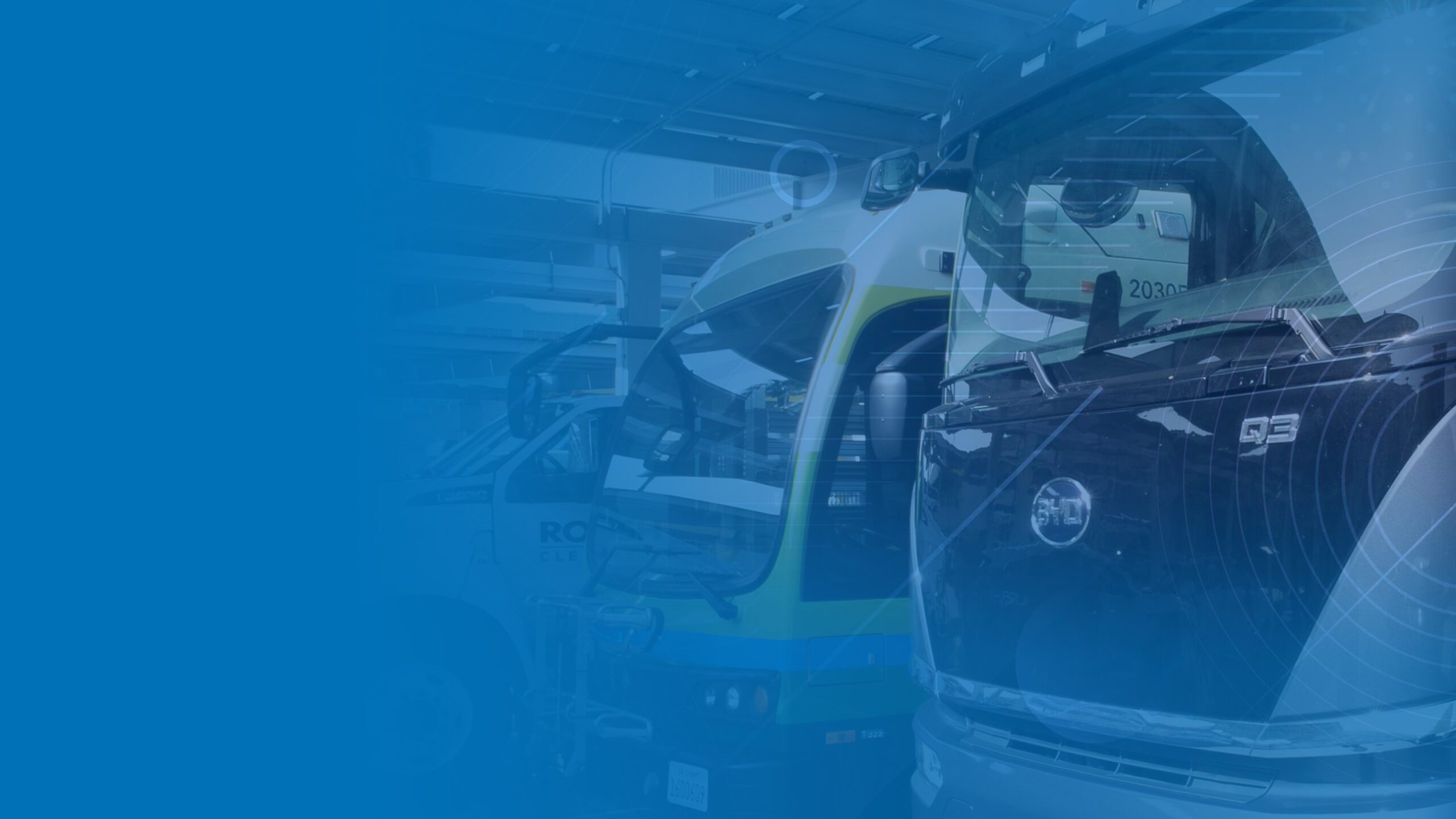
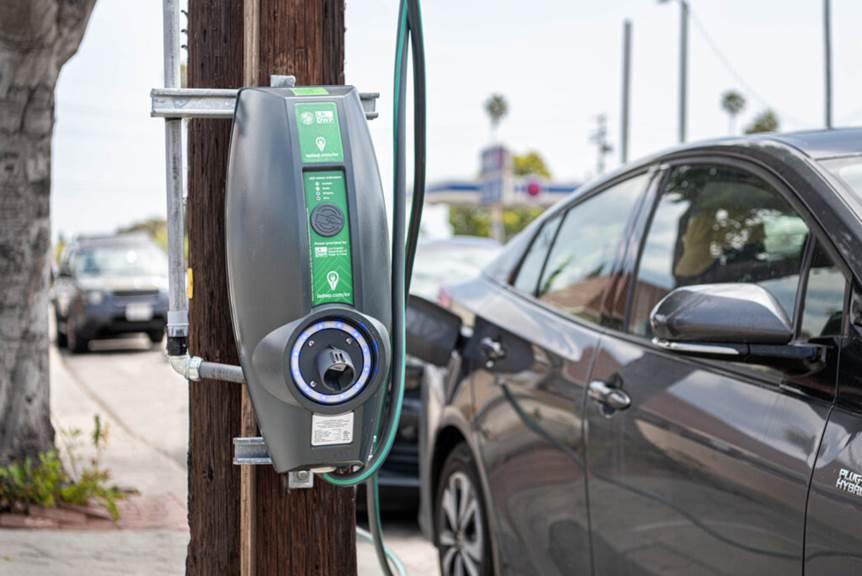
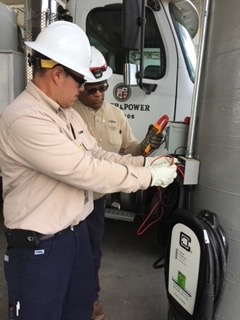 With this collaborative spirit, LADWP has been able to go above and beyond some of its initial targets. The
With this collaborative spirit, LADWP has been able to go above and beyond some of its initial targets. The 